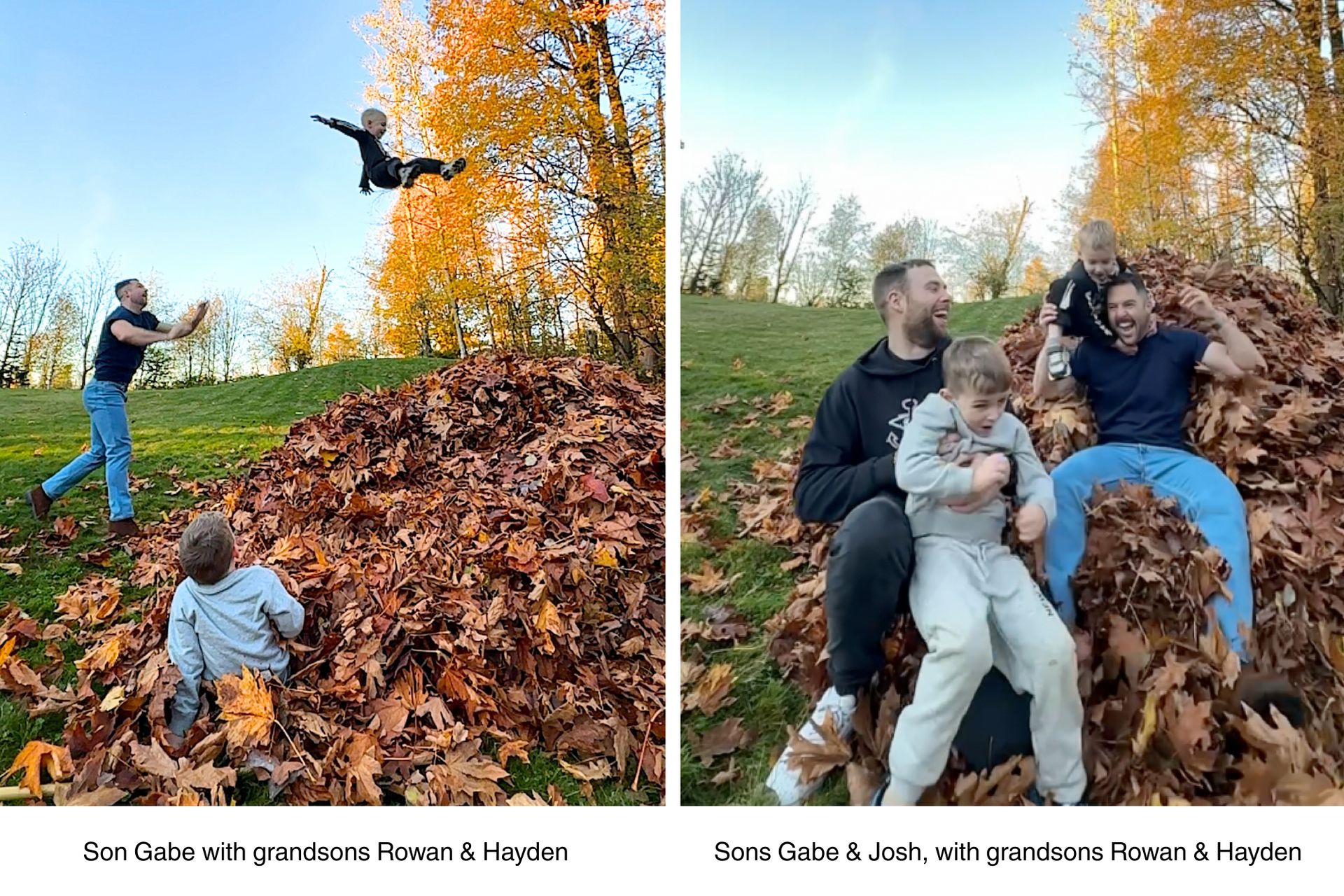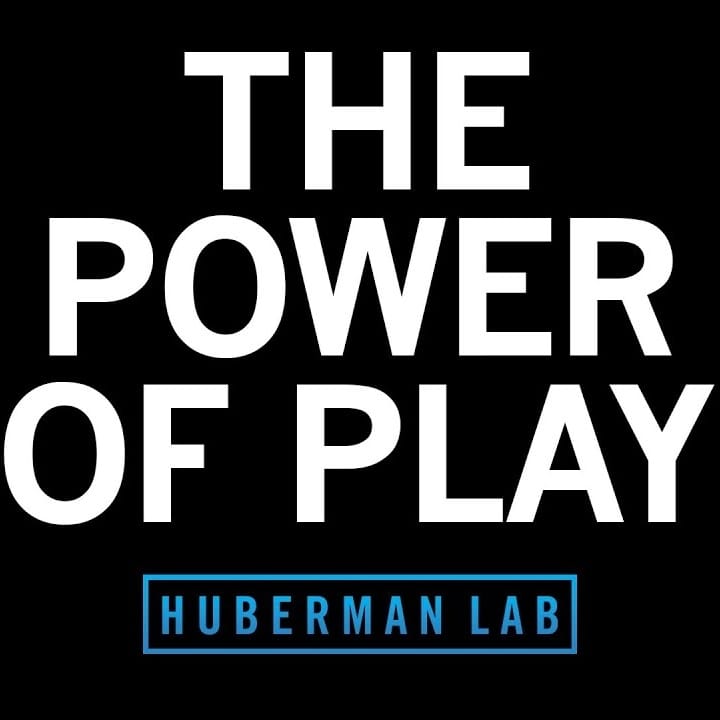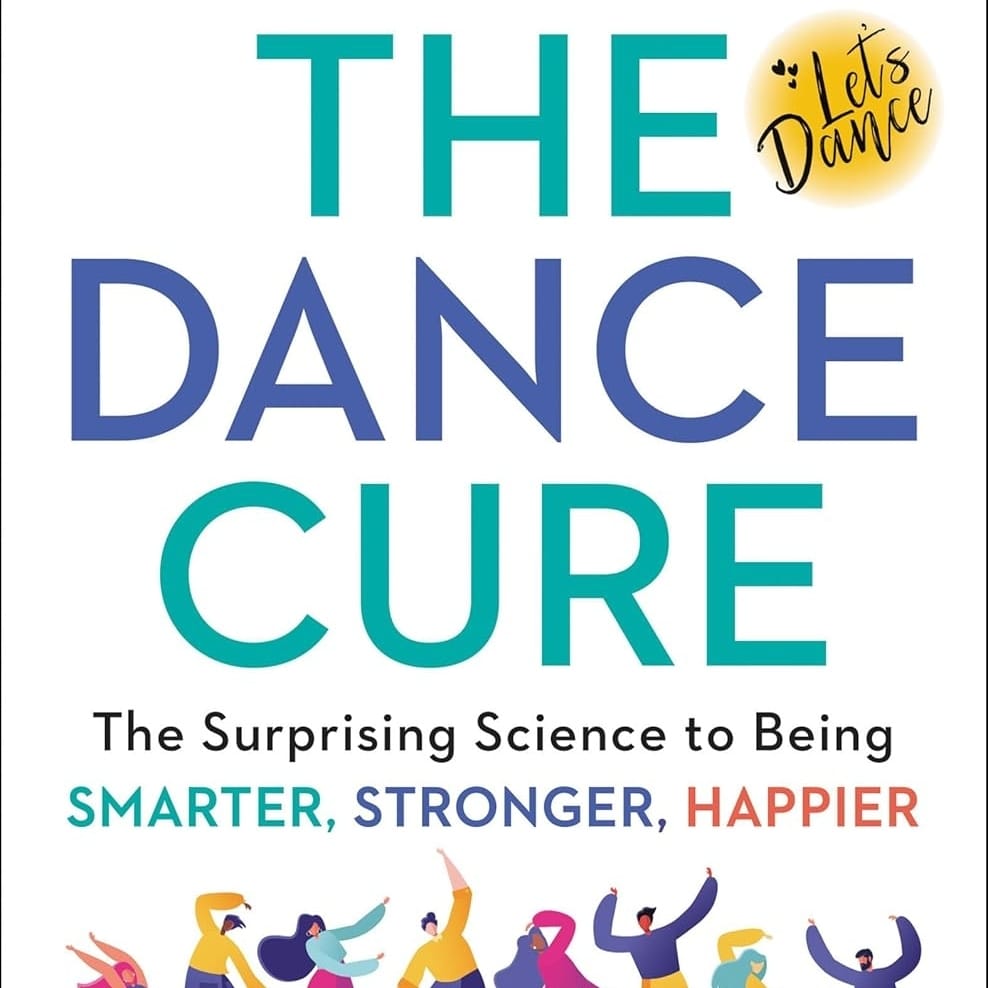A Moment Worth Remembering
Have you ever taken a mental photograph—the kind that captures not just an image, but a feeling? No phone. No camera. No pressure to make it Instagram-worthy. Just you, fully present—soaking it in, savoring it, and letting yourself feel that moment.
Last week, Jonathan came to me with an idea. I always love it when he has an idea, so I said with anticipation, “Tell me about it!”
He said, “So here's the deal. The forecast indicates that we have one sunny day coming up before the rain arrives. One small window of opportunity before everything turns wet, soggy, and gray.” Then he looked at me with that mischievous glint in his eyes and said, “What if I blew all the leaves into a giant pile and invited the grandkids over to play?”
Now, you should know that about eight giant maple trees border our yard. It takes hours and hours to blow those leaves off the lawn. So I knew when he was talking about a big pile, he was talking about a pile 20 or 30 feet in circumference and at least seven or eight feet high.
The Responsible Answer
The idea sounded great, except for the part where it was completely impractical. We both had a calendar full of meetings, deadlines, and grown-up responsibilities—the kind that make you feel important and exhausted at the same time. So, like a responsible adult, I said, "We can't. We have too many commitments."
I caught the disappointment in his eyes—the deflated resignation of his inner child, hoping to play, but being reminded they have to keep their nose to the grindstone. And while I hated reminding him, I kept moving forward, focused and driven. Because that's what efficient, conscientious people do: they stay task-focused.
The next morning, the last day of sunshine, one of our sons texted Jonathan, "How does the weather look today? Too wet?" He and his brother were rearranging their work schedules so their boys, Rowan and Hayden, could come and jump in the leaves with Grandpa. I watched Jonathan read the messages—his face a mix of longing and practicality.
And then something cracked open in me — a tiny rebellion against my own seriousness. I said, "What if I contact our clients and see if we can reschedule?".
The Joy
Jonathan’s face lit up. The meetings were rescheduled, and what happened next was pure, unfiltered joy. Laughter filled the yard as leaves flew through the air—three generations playing together, forgetting the schedule and remembering what truly matters.
At dinner, our grandson Rowan asked, “Grandpa, when can we do this again?” The answer came softly: with the rain coming, not until next year.
And that’s when it hit me—Rowan will never be four and playing in the leaves in our yard again. Next year, he’ll be five.
The next morning, our son Gabe posted a video of himself launching Rowan into the leaf pile with the caption: “This is what it’s all about.”
As I reflected on that afternoon, I realized what we’d experienced wasn’t just joy—it was something far more profound. What seemed like simple fun was actually the brain resetting itself—healing, expanding, and growing.

The Science of Play
(What Neuroscience—and Our Nervous System—Knows About Staying Alive Inside)
We tend to think of play as child’s territory. A sandbox thing. Something we outgrow when life becomes “serious.”
But neuroscience tells a different story. According to Stanford neurobiologist Andrew Huberman, play is the portal to neuroplasticity—the brain’s ability to change, learn, and grow at any age. It’s not a luxury. It’s how we stay alive inside.
Half a century ago, another neuroscientist, Jaak Panksepp, affectionately called “the rat tickler,” discovered that play isn’t optional—it’s homeostatic, meaning it helps the body and brain stay balanced. Just like hunger or sleep, when we don’t get enough of it, our brain creates a biological craving. Panksepp’s work showed that when animals were deprived of play, they later overcompensated—playing longer and more exuberantly when given the chance.
He also found that play activates the periaqueductal gray, a deep brainstem region that releases endogenous opioids—our natural feel-good chemicals. These gentle doses of internal opiates help the brain relax, open, and rewire itself. In this low-stakes chemical state, our prefrontal cortex—the part responsible for learning, decision-making, and creative problem-solving—becomes more flexible, more imaginative, more human.
Play, it turns out, is the nervous system’s way of testing “what if?” without fear. It’s where we learn to stretch, explore, and recover—and those same qualities are what make a playful mindset so powerful in adulthood.
The Power of a Playful Mindset
A playful mindset isn't about silliness or pretending life is easy. It's the capacity to approach unfamiliar situations with curiosity instead of control. Huberman describes it as the ability to hold multiple outcomes in mind—without clinging to any of them.
In brain terms, this means lowering adrenaline and raising dopamine and endogenous opioids—a mix that keeps us alert but not anxious. When adrenaline drops, creativity rises. When the stakes are low, the mind expands. This is why "tinkering" so often leads to innovation.
Tinkering is simply play in motion—the act of playing around with something to see what happens. It's curiosity with its hands dirty. We loosen our grip on outcomes, experiment, adjust, and discover. As Nobel physicist Richard Feynman once said, "The enjoyment of figuring things out is the greatest pleasure of science."
Play is how we practice that enjoyment in real time—and remind the brain that exploration is safe. And when exploration feels safe, the brain's capacity to grow—its neuroplasticity—is unlocked.
Low-Stakes Play and Neuroplasticity
This safety is the soil where neuroplasticity takes root. Neuroplasticity is the brain’s built-in ability to rewire itself—to learn, adapt, heal, and grow new connections no matter how old we are. But this growth doesn’t happen under pressure. It depends on what Huberman calls the high-trust, low-stakes state—a mental space where curiosity outpaces fear.
Low-stakes play isn’t about competition or performance; it’s not the Super Bowl or the high-stress scramble to win. It’s play for the sake of play—when we explore, experiment, and laugh without worrying about the outcome. Whether it’s trying a new recipe, dancing in the kitchen, or playing a new game, these moments release brain-derived neurotrophic factor (BDNF). This protein acts like fertilizer for learning, helping brain cells form stronger, faster connections.
When life becomes too serious—too driven by adrenaline and pressure—that system shuts down. Which is why so many adults stop learning as easily: not because their brains can’t change, but because their inner environment has lost the chemistry of play.
The good news? There’s a cure as old as rhythm itself—and it starts the moment you stop taking yourself so seriously, turn up the music, and let your body do what it’s been wanting to do all along: move.
The Dance Connection
Among all forms of play, dance stands out as one of the most powerful. Dynamic, multi-directional movement activates the vestibular system—our sense of balance and orientation—which talks directly to the cerebellum and prefrontal cortex. That integration triggers a cascade of chemicals—dopamine, serotonin, and BDNF—that unlocks the gates for neuroplasticity.
Harvard psychiatrist Dr. John Ratey, author of Spark, confirms that dance and coordinated movement “light up more areas of the brain than any other human activity.” It’s not just physical—it’s relational, rhythmic, improvisational. In essence, dance is the body’s oldest form of learning—and maybe its most joyful.
And joy, as it turns out, is contagious. The more we move and play, the more permission we give others—especially as adults—to remember what aliveness feels like.
Reclaiming Play as Adults
Across the animal kingdom, species that play the longest—dolphins, primates, humans—also maintain the highest neuroplasticity throughout life.
Huberman notes that adult play doesn’t have to look like childhood play. It’s any activity that invites novelty, laughter, and lightness into the room—gardening, painting, chess, surfing, joking, dancing in the kitchen at 9 p.m. when you’re supposed to be cleaning up.
As he puts it, “Play is not a break from learning. It is learning.” Every hour we give to play—without measuring, monetizing, or mastering it—is an hour the brain thanks us for with more flexibility, creativity, and joy.
And that joy isn’t just emotional—it’s biochemical. It’s the sign that our nervous system is doing what it was designed to do: grow through curiosity, not control.
A Closing Reflection
Play doesn’t just make life fun. It keeps us from hardening.
It’s how the brain remembers that growth is possible, that laughter can be medicine, that movement is healing, and that we were never meant to become static creatures of routine.
So, if you find yourself tightening up—gripping outcomes, measuring worth—consider this your cue: loosen the reins. Move your body. Laugh until your abs hurt. Release your inner child and dance with abandon. Or simply blow some leaves into a pile and jump in.
Your brain—and your heart—will recognize what you’re doing. You’re playing. And it’s good.
Until next week,
Teresa Penner | Co-Founder & Executive Director of LifeApp

Resources To Dig Deeper

Video
Using Play to Rewire & Improve Your Brain
This episode is absolutely worth your time—it’s packed with insights on how play rewires the brain to function better across every area of life. Huberman explains how play sparks curiosity, creativity, and adaptability by putting the brain in a unique state of learning and reward. It’s how we safely test new scenarios—what scientists call contingency testing—building flexibility for real-world challenges. Even small doses of play or “tinkering” strengthen neuroplasticity and emotional well-being. He also introduces the idea of a “personal play identity”—how the ways we played as kids still shape our adult personality, relationships, and problem-solving today.
-Dr Andrew Huberman (1:46:35)

Book
The Dance Cure: The Surprising Science to Being Smarter, Stronger, Happier
In The Dance Cure, Dr. Peter Lovatt—founder of the Dance Psychology Lab—reveals how dance is one of the most powerful forms of play for the human brain. More than exercise, dancing activates the same neural pathways as curiosity and creativity, helping us communicate better, think more flexibly, and shift our emotional state. Drawing on stories from dance history, research from his lab, and his own life, Lovatt shows how losing yourself in rhythm can reduce anxiety, lift mood, and reconnect you to joy. It’s a reminder that play doesn’t just happen in the mind—it happens in motion.
-Peter Lovatt

Music
Can’t Stop the Feeling
“Can’t Stop the Feeling” is a joyful invitation to stop taking life so seriously and let the body lead for once. It’s a celebration of play in its purest form—when rhythm overrides self-consciousness and movement becomes medicine. Every lyric pulses with the reminder that joy isn’t something we think our way into; it’s something we move our way into. Watch the video, turn up the volume, and let yourself dance—not to perform, but to remember what it feels like to be fully alive, like a kid again.
-Justin Timberlake (4:45)

